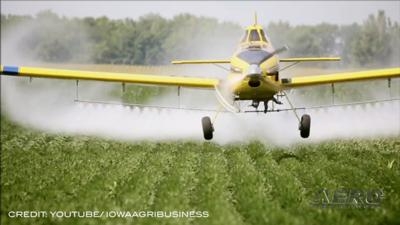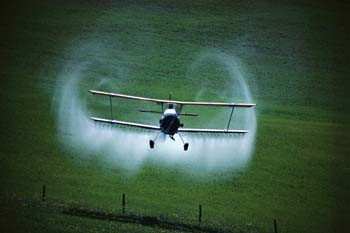Wed, Apr 20, 2022
As Food Security Decreases, Aviators Must Remain Vigilant to Prevent Mid-Air Collisions As Low as 10' AGL
Planting season has begun, and the National Agricultural Aviation Association (or, the NAAA) is asking UAV operators to beware of the greatly increased number of low-altitude agricultural aircraft operations.

Every year, crop dusters treat more than 127 million acres of cropland in the USA, among a variety of other services that increase yield while safeguarding the harvest from above. Agricultural flights combat fires, curb mosquito populations, and prevent losses before they occur. The NAAA points to the events in Ukraine as just the most recent among a string of issues facing the global food supply and decreasing alimentary security around the world. Pessimistic estimates state that as much as 15% of the world’s grain production could be missing from this year’s crops, with reserves already impacted from years of pandemic drafting amid decreased harvests. The global community needs every last acre of productive farmland in top shape, and a poorly-prepared drone flight could do a lot of damage should operators be lax in their airmanship.
“With Russia’s invasion of Ukraine restricting a huge portion of the world’s food supply, we cannot afford even a small disruption in the nation’s food supply chain,” NAAA CEO Andrew Moore said. “Agricultural aviators deliver nutrients, seeds and crop protection products to crops that will become consumers’ food and fiber supply in the U.S. and around the world. Their work cannot be delayed because of an unmanned aircraft not yielding to them, as is required by law. 2021 was a big year for aerial applicators, and we expect demand for aerial application services to be even higher in 2022.”

Moore points to the overlap between crop dusters and drones, pointing out that agricultural aircraft can fly down to 10 feet above ground level - basically eye to eye with the remote pilot. NAAA guidelines include mindfulness over right-of-way, ADS-B usage, operator training requirements, and the use of their website to contact local AG operations in the vicinity prior to flights. Small UAVs can be lethal to manned aircraft, despite the apparent disparity in size and velocity, doing far more damage than a bird strike, given the drone's batteries and metallic structures. Testing by the Colorado Agricultural Aviation Association distressingly showed that no pilot could visually track a 28-inch drone when flying regular operational speeds, meaning there's very little that can be done after the fact: AG accidents must be prevented before they can occur.
More News
With Testing Soon Complete, Launch Preparations Begin in Earnest Sierra Space's Dream Chaser has been put through the wringer at NASA's Glenn Armstrong Test Facility in Ohio, but w>[...]
Takeoff Roll The process whereby an aircraft is aligned with the runway centerline and the aircraft is moving with the intent to take off. For helicopters, this pertains to the act>[...]
“We’re proud of the hard work that went into receiving this validation, and it will be a welcome relief to our customers in the European Union. We couldn’t be mor>[...]
"Aircraft Spruce is pleased to announce the acquisition of the parts distribution operations of Wag-Aero. Wag-Aero was founded in the 1960’s by Dick and Bobbie Wagner in the >[...]
IDENT Feature The special feature in the Air Traffic Control Radar Beacon System (ATCRBS) equipment. It is used to immediately distinguish one displayed beacon target from other be>[...]
 Sierra Space Repositions Dream Chaser for First Mission
Sierra Space Repositions Dream Chaser for First Mission ANN's Daily Aero-Term (05.10.24): Takeoff Roll
ANN's Daily Aero-Term (05.10.24): Takeoff Roll Aero-News: Quote of the Day (05.10.24)
Aero-News: Quote of the Day (05.10.24) Aero-News: Quote of the Day (05.11.24)
Aero-News: Quote of the Day (05.11.24) ANN's Daily Aero-Term (05.11.24): IDENT Feature
ANN's Daily Aero-Term (05.11.24): IDENT Feature




